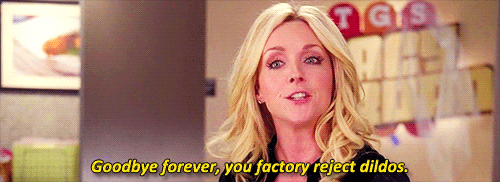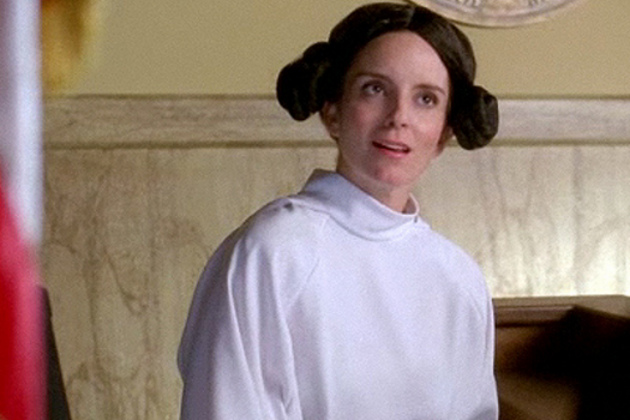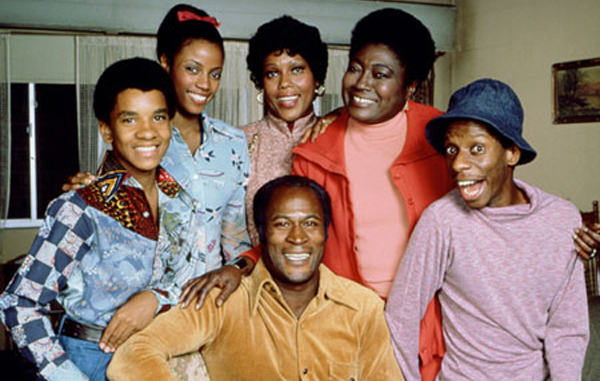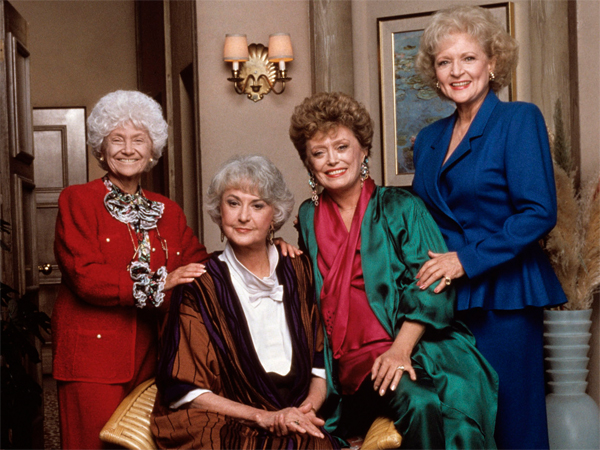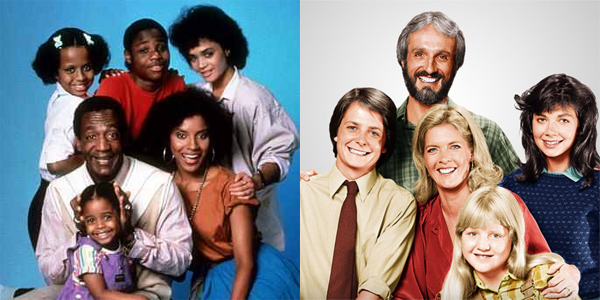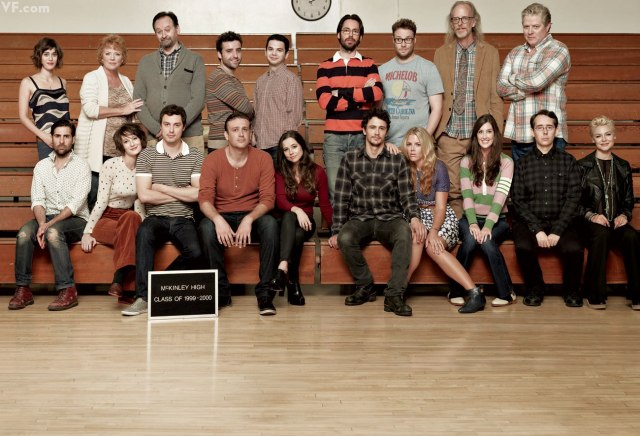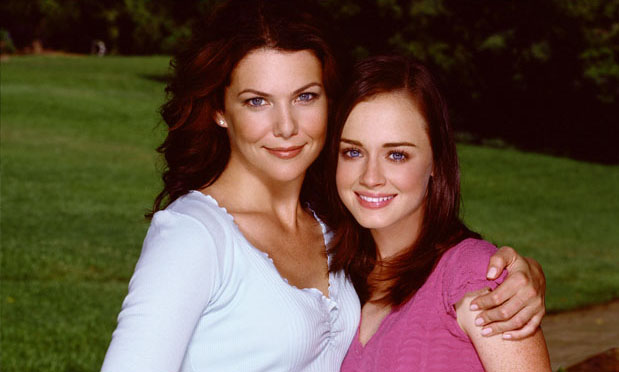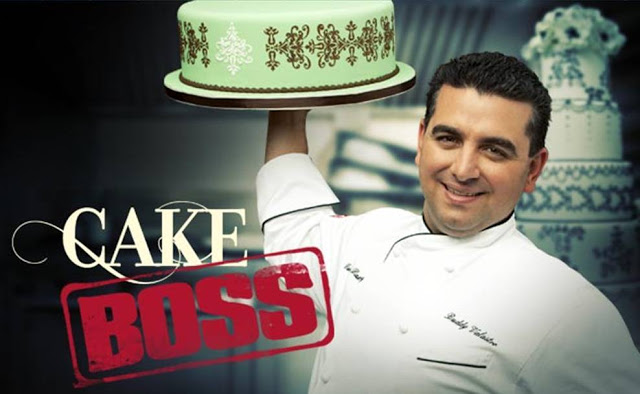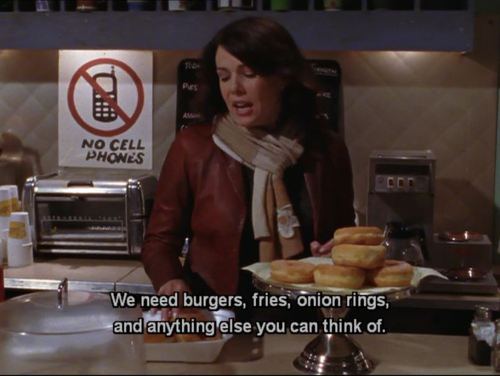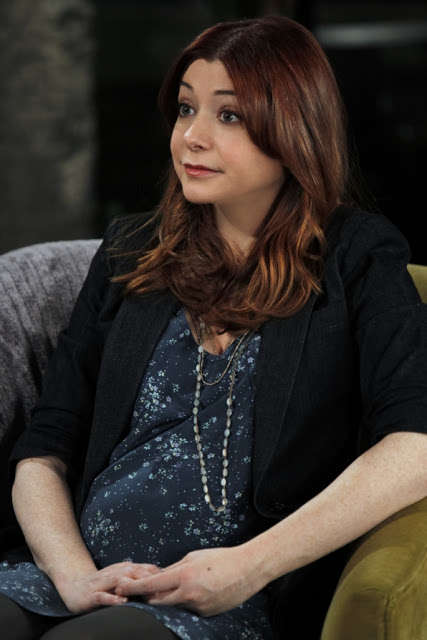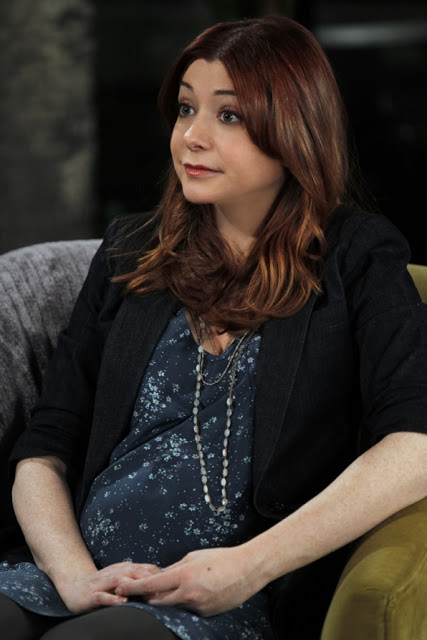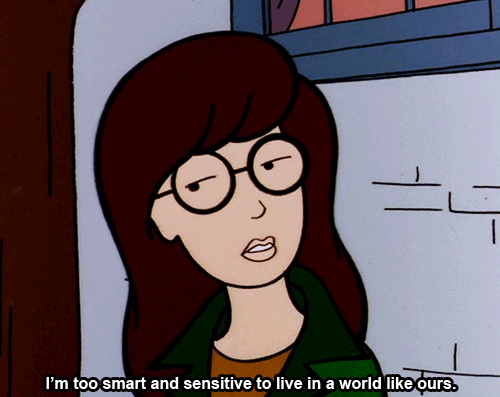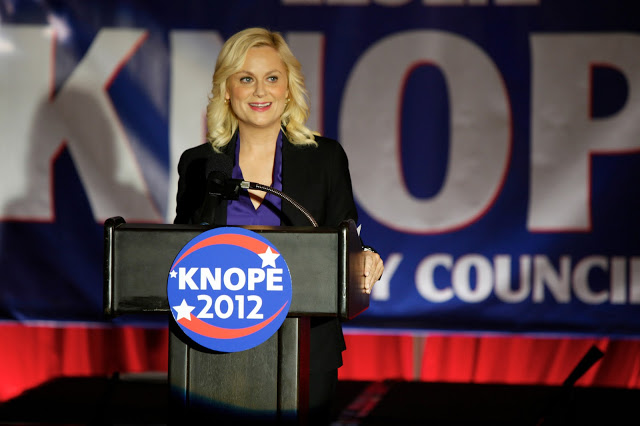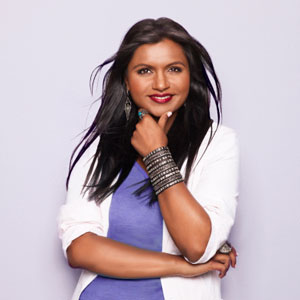I have never considered Liz Lemon a feminist icon of any kind, nor have I ever considered 30 Rock especially strong when it comes to gender politics.I don’t care for the obsessive joke-making about how Liz is ugly/mannish/old/awkward, and I haven’t always been comfortable with the way some of the “she’s baby-crazy!” or “she’s relationship-crazy!” comedy has played. …And yet, I think it’s been one of the most important, helpful, meaningful, landscape-altering shows for women in the history of television.
Tag: TV Sitcom
2013 Golden Globes Week: Big Bang Bust
The earliest sitcom I remember loving—I mean really loving—was Good Times, a show about a black family who lived in the Chicago projects, the central feature of which was their struggle to navigate life in poverty. It was an imperfect show: There was a strong message of bootstraps, which simultaneously challenged narratives about the Welfare Queens to whom Ronald Reagan had not yet given a name, and indirectly entrenched judgment of anyone who would accept “a hand-out.” But it was an important and challenging show, which did not shy away from discussions of racial and feminist justice. And it loved its characters deeply.
For all the times Parks and Rec has made my teeth grind with its Jerry bullying, I have known, always, that the show loves Jerry, and wants us to love him—and when the other characters are thoughtless or cruel to him, it is they who are wrong. It is their flaw, their envy, their self-involvement—not anything wrong with the inimitably lovable Jerry.
It is so rare that I love, really love, a sitcom that I feel overwhelmed with a bounty of riches that there are two shows currently airing that I adore: Parks and Rec and New Girl, about which I have written before that “the thing I like most is that it loves its characters. It asks me to root for them, and I do!”
I didn’t like TBBT the first time I watched it, which was just some random episode in the middle of the series. But then I watched it from the beginning, when it went into syndication, and I liked it a lot. It’s never been a show I’ve loved like the aforementioned shows, but it was a show I enjoyed quite a bit, anyway—and I thought it did a pretty swell job of exposing Nice Guyism for the garbage that it is.
Mostly, I liked Penny.
I really liked this female character, despite her tokenism, who was routinely drawn as a complex human being despite the guys’ objectification of her. I liked that she was allowed to be funny, and clever, and have sexual agency, and teach the guys by example how to stand up to bullies.
The show, I thought, liked Penny, too.
And I really liked the additional female leads that were added in time. I liked Bernadette—even though she has a terrible case of Bailey Quarters which compels us to pretend that she’s not beautiful because she wears glasses and someone else is supposed to be the sexpot on the show—and I loved Amy Farrah Fowler. (I really like Leslie Winkle whenever she shows up, too.) I liked most of the scenes between the girls, and I was glad Penny wasn’t isolated in a tower of Exceptional Womanhood anymore.
And, this season, the show seems to have lost every trace of the love it once had for Penny.
Penny isn’t allowed to be good at anything anymore. She can’t accomplish this, she can’t understand that, she’s not even smart enough to take science classes at community college. This is the same character who used to (literally) kick ass on earlier seasons, and now her entire oeuvre consists of drinking wine and making sure Leonard still thinks she’s sexy.
There was an episode earlier this season, in which Penny was taking a history course, and couldn’t even write a decent paper on her own. Leonard was being a complete asshole about it, and, watching the show, Iain and I were bitterly complaining that the show had rendered Penny incapable of writing a 101-level essay. When at last Penny presented Leonard with a B+ paper, we were so happy—only to be immediately crushed by the reveal that Bernadette and Amy had helped her, and only helped her enough to get a B+, because they wanted it to be “realistic.”
Every time Penny trudges by in her waitress uniform, I now cringe. Because it’s just a reminder about how the show won’t let her succeed. At anything.
Which certainly doesn’t make for a better show. I would have found an episode about Penny and Leonard trying to navigate their relationship while she’s taken away by a movie role (professional success! yay for Penny!) exponentially more interesting than the last episode, where I instead watched Penny put on sexy glasses to give Leonard a boner to assuage her insecurity after another woman flirted with him.
The fact is, TBBT has officially fallen out of love with Penny. And that makes TBBT pretty damn unwatchable for me.
Take note, sitcom writers: I can’t love your characters more than you do.
———-
2013 Golden Globes Week: The Evolution of ‘The Big Bang Theory’
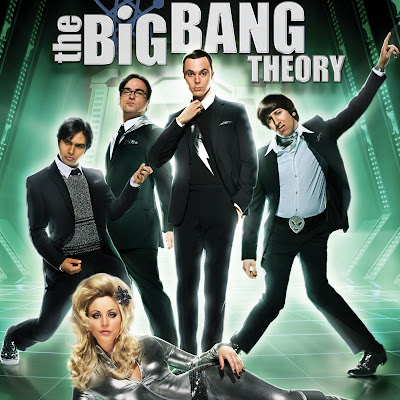 |
| Kunal Nayyar, Johnny Galecki, Jim Parsons, Simon Helberg, Kaley Cuoco |
Written by Rachel Redfern.
The Big Bang Theory, the show that legitimizes the nerd in all of us and tickles that small (or large) part of us that gets the Star Trek jokes. The writers of the show are like geeky unicorns who can finally tell that nerdy joke you’ve been trying for years and who make you smile with superiority when you manage to understand one of the many scientific concepts thrown around.
For the second time, The Big Bang Theory has been nominated for a Golden Globe award in Best Television Comedy Series. This is also the second Best Actor in a Television Series-Comedy or Musical nomination for Jim Parsons, the hilarious actor who plays Dr. Sheldon Cooper, an award that he won back in 2011. Similarly, Johnny Galecki was nominated for the same award in 2012.
Instead of just being another rendition of ‘Friends’ and ‘How I Met Your Mother,’ The Big Bang Theory has a unique foundation in its scientist main characters. The main characters Leonard Hofstadter (Johnny Galecki) and Sheldon Cooper (Jim Parsons) are brilliant, but struggle socially, embodying the traditional nerd stereotype in their love of science fiction shows, fantasy card games, comic book mania, and gamer lifestyle. In the typical sitcom, these kinds of characters are usually background extras that provide the comedic situation for a bad date; while definitely quirky, each of The Big Bang Theory characters’ intelligence and desperate need for affection provide the necessary comedic relief.
The show’s contrasting use of pop culture and advanced scientific concepts is engaging and is augmented by guest appearances from Star Trek alums LeVar Burton, Will Wheaton, and a voice-over by the unparalleled Leonard Nimoy, as well as scientific celebrities Stephen Hawking and Neil DeGrasse Tyson, to name a few.
However, despite the unique nature of the show and it’s legitimately hilarious dialogue there are problematic elements to The Big Bang Theory and it’s a problem I’ve mentioned before: the use of stereotypes. Stereotypes are obviously an important part of comedy; the stereotype is a relatable way to demonstrate a familiar funny situation (or an unfamiliar one since I know few people as smart and neurotic as Sheldon Cooper). However, the stereotypes used in The Big Bang Theory often pigeon-hole women who aren’t physically appealing into socially awkward nerds with latent lesbian tendencies and traditionally beautiful women into uneducated sluts with bad taste in men.
Kaley Cuoco plays Penny, the third main character on The Big Bang Theory, who is a beautiful, young waitress and a bit of an airhead. There are a few disturbing moments on the show when Penny is condescended to by the male characters and is given lines to reflect an “I’m hot but stupid” mentality. Now, this isn’t to say that there aren’t some people in the world who are probably like this, but perhaps it wouldn’t be so noticeable on The Big Bang Theory if it wasn’t used so often with it’s female characters.
 |
| Kunal Nayyar, Melissa Rauch, Simon Helberg, Jim Parsons, Mayim Bialik, Johnny Galecki, Kaley Cuoco |
In the first three seasons it’s especially noticeable as all of Penny’s beautiful friends are given similar characteristics, as are the beautiful women that the boys date. Even Bernadette (Melissa Rauch), Howard Wolowitz’s fiancé, who has a Ph.D in microbiology, is often typecast as an airhead who doesn’t understand a common sense principle as well as the boys.
Perhaps this is a good transition into the sexist mess that was the early Howard Wolowitz character. One of Sheldon and Leonard’s close friends, for the first four seasons Howard played the role of a disgusting, probably should be on a sex offender list somewhere, horny aerospace engineer. His goal was to get laid and so he lied to women, hired prostitutes, chased them down in a park, and was in general, completely repugnant for laughs. While the character has improved since the introduction of the Bernadette character and their marriage, for the first four seasons, Howard’s character ran rampant through the show, completely unchecked and without any repercussions for his behavior. If anything, there was a congratulatory sense to his actions, as if him hiring a prostitute and going back to his old ways of disrespecting women after a small breakup was something the audience should be sympathetic toward.
Howard’s character displays what I like to call the ‘Mad Men Principle:’ is a show sexist because it portrays sexist situations, or is it instead brilliantly self-aware and exposing sexism? In the case of Mad Men I would argue that yes, it is self-aware and exposing the massive amounts of sexism that was commonplace in the 1960’s. Does the same hold true for The Big Bang Theory?
I would say that in the early years of the show, no, it was sexist. For instance, take the episode “The Killer Robot Instability,” during this episode the sexually rapacious and unethical Howard Wolowitz says something incredibly inappropriate, wildly sexual and completely disrespectful to Penny for about the millionth time, yet when she tells him off, she’s the one who has to apologize for being rude. Despite the fact that Penny has now put up with Howard’s constant pick-up lines and overt sexual come-ons, when she finally stands up for herself and informs him that his behavior is inappropriate, she is the one in the wrong; this action validates Wolowitz’s inappropriate behavior and paves the way for him to continue being disgusting without consequences.
Or again, how Wolowitz treats his mother badly and demands that his girlfriend and wife cook and clean and care for him: the lovely Bernadette looks confused by his constant insistence that she do so, but continues to participate in his illusions about how she’s going to behave.
However, the show has gotten better the past few seasons; the characters feel more well-rounded, there are fewer jokes at Penny’s expense, and the “quick, try to bone every woman in sight” attitude from Wolowitz has subsided since his involvement with the Bernadette character. In fact, there was a moment of acknowledgment and apology for his past behavior in season five, an act of redemption that has put the show on the good side of the ‘Mad Men Principle’ for me.
 |
| Simon Helberg, Jim Parsons, Johnny Galecki, Kunal Nayyar |
In fact, the season four episode, “The Roommate Transmogrification,” started a clever role reversal featuring Wolowitz and Bernadette as she is offered a high-paying job at a pharmaceutical company. This job will make Bernadette the main ‘breadwinner’ in their relationship and spawns a situation where Bernadette treats him like a trophy wife. Similarly, in season five’s “The Shiny Trinket Maneuver,” Bernadette tells Wolowitz that she’s not sure she wants children, a problem that’s resolved by her compromise to have children if Wolowitz will stay home with them so she can continue her career. It’s obvious that this compromise is unacceptable to him, a fact that I appreciated since it was automatically assumed in the episode (as it so often is in life) that it’s the wife’s duty to give up her career and stay home with her children.
It seems glaringly obvious to make this point about a show who’s title references evolution, but the great evolution and development of The Big Bang Theory makes it, in my opinion, a well-thought out and intelligent sitcom. I’m hopeful that this deserving show will win a golden globe this year and that I’ll continue to laugh like the giant geek I am at every brilliant Star Trek joke that Sheldon Cooper makes.
Rachel Redfern has an MA in English literature, where she conducted research on modern American literature and film and its intersection, however she spends most of her time watching HBO shows, traveling, and blogging and reading about feminism.
The Great ‘Freaks and Geeks’ Rewatch of 2012
 |
| The Vanity Fair reunion. |
 |
| Kim isn’t even in this picture, dammit. |
 |
| “You’re like my only friend, Lindsay, and you’re a total loser!” |
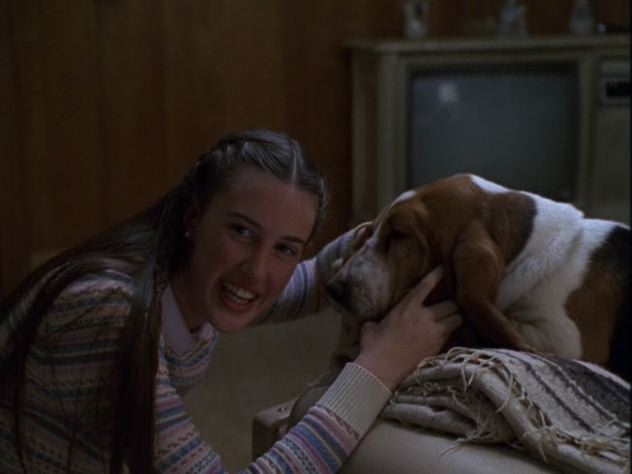 |
| Awww, Millie. |
 |
| It could never have lasted. Look at the terror on his face. |
World Champion Eaters: The Paradox of the Gilmore Diet in ‘Gilmore Girls’
The long-running TV series The Gilmore Girls followed the lives of a single mother who got pregnant at 16 and her daughter as they live and grow in a small town. The mother and daughter duo (Lorelai& Rory) are unconventional, confident, independent, smart, capable, and fun-loving. In Lorelai’s words, “That’s because I’m not orthodox. I’m liberal with a touch of reform and a smidgen of zippity-pow.” The way in which Lorelai and Rory relate to food, however, is a complex issue that can function as a microcosmic reading of the entire show.
 |
| Rory (Alexis Bledel) and Lorelai (Lauren Graham) in Gilmore Girls |
———-
Gender and Food Week: ‘Cake Boss’: A Sweet Confection with Dark Filling
 |
| Cake Boss |
On the other hand, along with newer programs such as Breaking Amish, Strange Sex, and Flip That House in rotation, which shift the focus away from the domestic and instead focus on either culturally deviant lifestyles or hands-on, “do-it-yourself-ism”, certain elements of Cake Boss’ structure seem to be reaching out towards a unique segment of otherwise non-initiated TLC viewers: namely, straight men.
Interestingly, though Carlo’s Bake Shop seems to employ a fleet of women as “cake decorators” (the distinction is clearly drawn here, in contrast to the male bakers), more screen time is paid to the colorful personalities of the few men that work there: Mauro the number two, Hothead Joe, Danny “The Mule”, and Cousin Frankie. Their characters have been fleshed out enough to act as Buddy’s consigliere, while the women are granted occasional group reaction shots. Moreover, all of the male bakers wear chef’s coats and white pants -even the delivery boy is dressed in all white — and none of the women are required to be in uniform. In Carlo’s Bake Shop, baking is a serious business, and the visual and social cues here reveal that women are neither taken seriously, nor considered a real asset to the business.
 |
| Cake Boss |
Gender & Food Week: Pop-Tarts and Pizza: Food, Gender, and Class in ‘Gilmore Girls’
 |
| Lorelai Gilmore (Lauren Graham) in Gilmore Girls |
Guest post written by Brianna Low.
 |
| Lorelai (Lauren Graham) and Rory Gilmore (Alexis Bledel) in Gilmore Girls; image via Emily Grenfell |
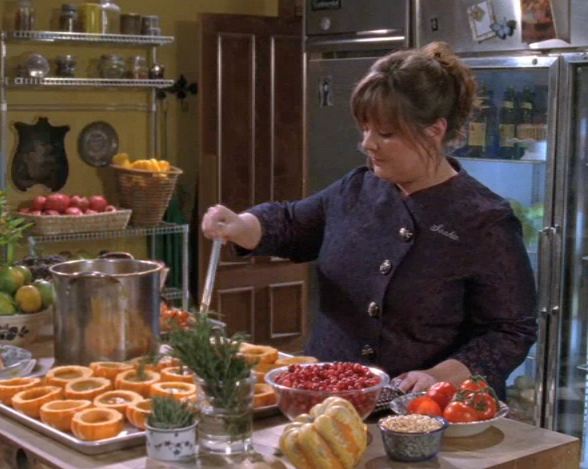 |
| Sookie St. James (Melissa McCarthy) in Gilmore Girls |
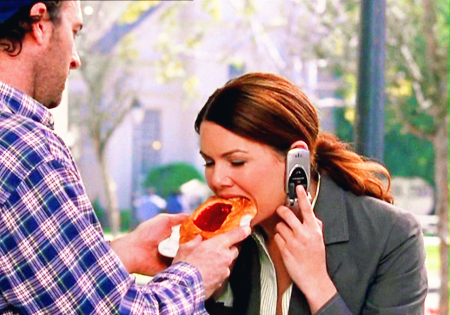 |
| Lorelai Gilmore (Lauren Graham) in Gilmore Girls |
Throughout all seven seasons Luke is often shown bringing food to the Gilmore’s when they are in need. For example, when Lorelai’s father is hospitalized after a heart attack, Luke brings food to Lorelai and her family at the hospital. Inasmuch as food can be gendered, diners and diner food fare with its burgers, fries, and malts often tend to be coded as masculine, however Luke is an interesting case in that he refuses to eat his own food. Although he is never explicitly referred to as a vegetarian, Luke is shown refusing to eat hamburgers and often refers to meat as “dead cow”. When Luke and Lorelai start dating and eventually move in together, Luke is decidedly more active in their domestic affairs, taking charge of the cooking and their home remodel. While this might not be the most shocking or unheard of example of stereotypical role reversal in heterosexual relationships, it’s definitely interesting when examining Luke and Lorelai’s relationship with food and each other.
 |
| Gilmore Girls |
"Pregnancy Brain" in Sitcoms
 |
| Alyson Hannigan as Lily Aldrin in “How I Met Your Mother” |
 |
| Fortunately, Lily has a man by her side! (Hannigan and Jason Segel) |
 |
| Sofia Vergara as Gloria Delgado-Pritchett on “Modern Family” |
 |
| More similar than you might think (Vergara and Julie Bowen) |
"Pregnancy Brain" in Sitcoms
 |
| Alyson Hannigan as Lily Aldrin in “How I Met Your Mother” |
 |
| Fortunately, Lily has a man by her side! (Hannigan and Jason Segel) |
 |
| Sofia Vergara as Gloria Delgado-Pritchett on “Modern Family” |
 |
| More similar than you might think (Vergara and Julie Bowen) |
Why I Love ‘Wonderfalls’
 |
| In this gif, the part of Wonderfalls is played by Daria. Wait, that’s kind of confusing. |
 |
| Inside Bryan Fuller’s brain. Artist‘s rendition. |
 |
| Jaye and Mahandra |
 |
| And I’m supposed to believe Jewel Staite is evil and manipulative?? |
Why We Need Leslie Knope and What Her Election on ‘Parks and Rec’ Means for Women and Girls
 |
| Leslie Knope (Amy Poehler) in Parks and Recreation |
“Leslie Knope *is* amazing. Over the course of three seasons, she’s gone from a small-time, small-town government employee with delusions of grandeur to someone it’s easy to believe could make a big splash on the larger political stage one day. I hope she does, and I hope we get to see it. What’s more, the popularity of her character signals an important change, a backlash against the backlash: the mainstream acceptance of a heroine who lives by feminist values and encourages others to do the same.”
“Watching Leslie win felt like a victory for not only women but people who care about the world.”
Megan Kearns is a Bitch Flicks Staff Writer, a freelance writer and a feminist vegan blogger. She tweets at @OpinionessWorld.
Women Doctors: Professionally Competent, Messy Personal Lives
 |
| Mindy Kaling as Dr. Mindy Lahiri in The Mindy Project |
 |
| Am I mess or a rock star intern? I can’t remember! | Meredith Grey (Ellen Pompeo) in Grey’s Anatomy |
 |
|||
| Oh, I get it. It’s butterflies in the…er, ribcage. | Mamie Gummer in Emily Owens, M.D. |
